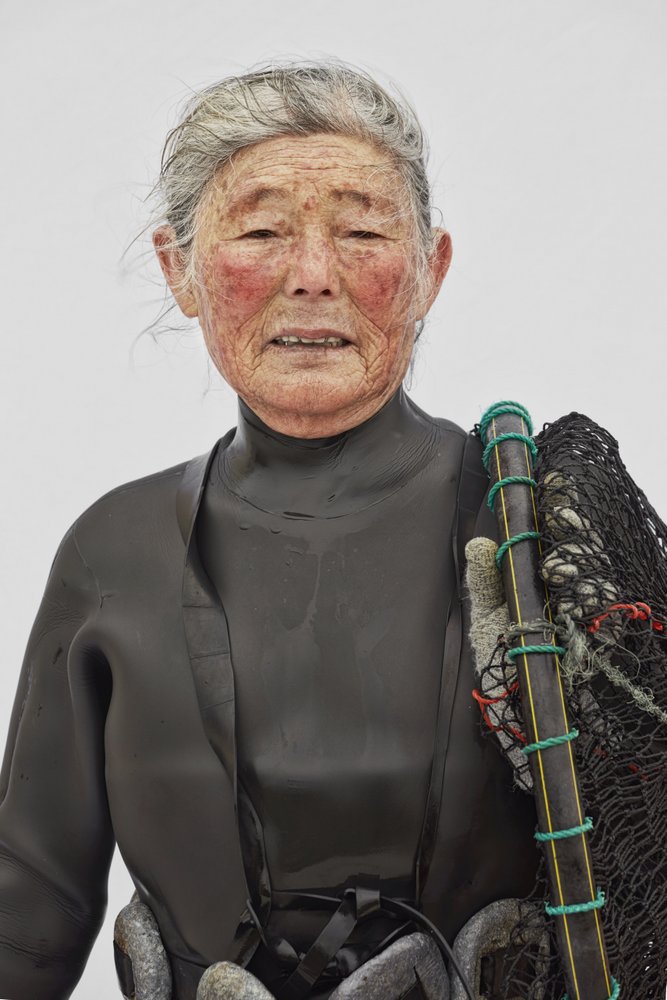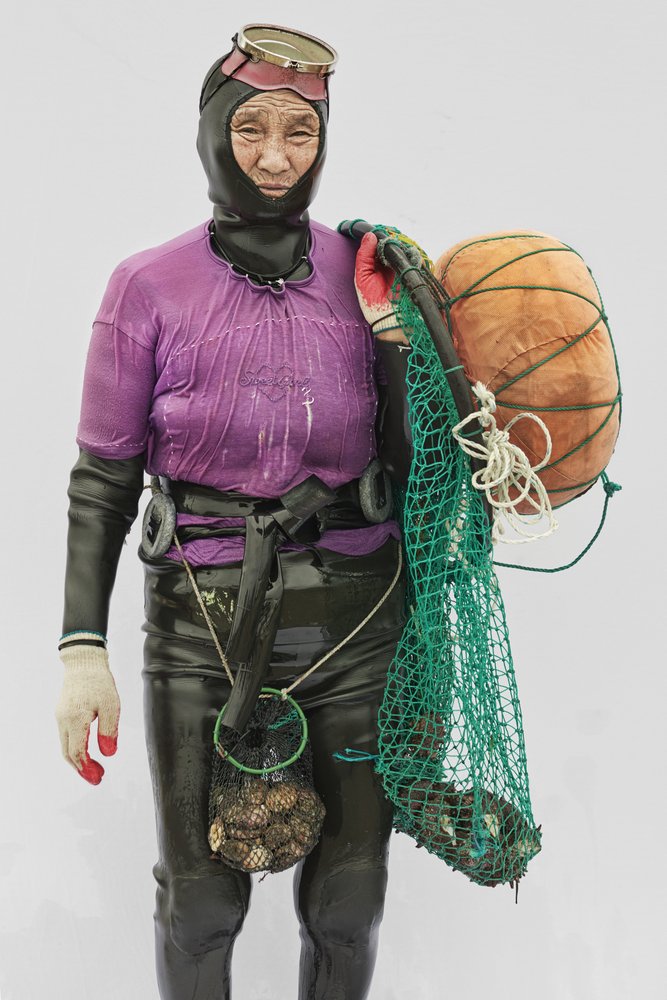Sydney’s Australian National Maritime Museum is showing Haenyeo: The sea women of Jeju Island, a series of life-size portraits by Korean photographer, Hungsun Kim. The exhibition is open until June 13.

The 12 powerful portraits show the Haenyeo sea women – mothers and daughters mostly over 60-years-old, who free dive to depths of 20 metres for two minutes. The hard-working women spend hours filling nets with sea cucumber, urchins, seaweed and abalone. This cultural practice has stayed traditional for centuries, with the only major change being the adoption of wet suits and weight belts in the 1970s.
Hyungsun Kim’s portraits show these women divers as more than just a symbol of an ancient practice, the Museum states, their incredible lives in the sea are writ in every line and surface. Each woman confronts the photographer’s lens after coming in from a dive, in a makeshift sheeted studio assembled on the shore.
‘They are shown exactly as they are, tired and breathless,’ said Hungsun Kim. ‘But, at the same time, they embody incredible mental and physical stamina, as the work itself is so dangerous; every day they cross the fine line between life and death. I wanted to capture this extreme duality of the women: their utmost strength combined with human fragility.’
Divers train with their elders for years before they reach sanggun, senior status, to be allowed to dive in difficult conditions. The women pray to the Jamsugut, goddess of the sea, for safety and abundance.
The unique and sustainable cultural practice was inscribed on the UNESCO List of Intangible Cultural Heritage of Humanity in 2016. The dramatic volcanic island is a tourist island and many women choose other livelihoods or move to cities, while pollution and industrial scale fishing is degrading their seas and their catch. Today there are just 4000 women registered as Haenyeo divers, out of a population of 600,000 on Jeju Island. The numbers have fallen considerably since the 1960s, when there were an estimated 23,000 divers.
The dramatic volcanic island is a tourist island and many women choose other livelihoods or move to cities, while pollution and industrial scale fishing is degrading their seas and their catch.

The exhibition is produced by the museum, along with the Korean Cultural Centre Australia, with assistance from the Jeju Special Self-Governing Province. It launched to coincide with International Women’s Day and also commemorate the 60th anniversary of diplomatic relations between Australia and Korea. Click here for more info.





Be First to Comment